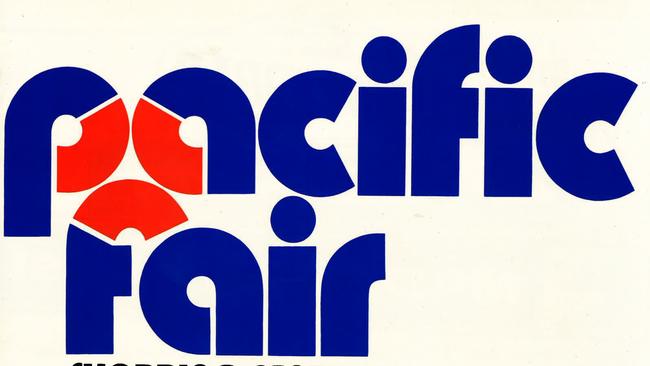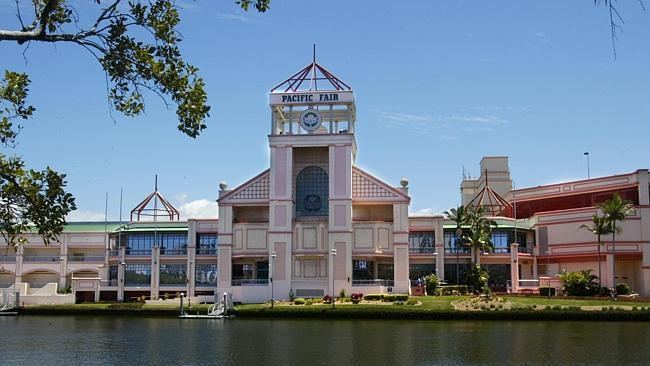Pacific Fair Shopping Centre: Inside story of Gold Coast retail complex
Pacific Fair is the Gold Coast’s biggest shopping centre, but it’s not all been smooth sailing for the retail mecca. This is the inside story of the complex’s ups and downs.
Business
Don't miss out on the headlines from Business. Followed categories will be added to My News.
PACIFIC Fair’s opening in mid -1977 dramatically up-ended the Gold Coast’s retail sector and started a shopping arms race for superiority that continues today.
Opening the same year as Star Wars’ release in cinemas, the complex spent the 1970s and 1980s battling it out with Sundale and Scarborough Fair to win over customers and shoppers.
But the dawn of the 1990s brought competition change, with Sundale closing, the opening of the newly expanded Australia Fair and plans unveiled for Robina Town Centre and Harbour Town.
During the late 1980s, Pacific Fair’s owners AMP rapidly moved to expand their complex again to be competitive in the 1990s.
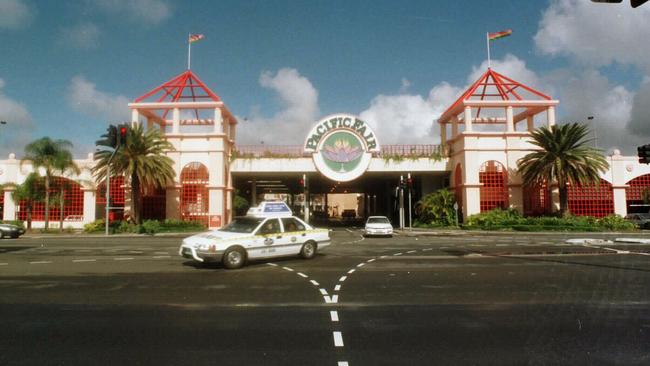
The $100m new-look centre was to include more space for Myer and Coles, a third department store, a second supermarket and 100 more specialty shops.
A bridge across Little Tallebudgera Creek would also be added to connect Pacific Fair and the Gold Coast Highway.
AMP property manager Brian Bubbers told the media the expansions were designed to meet the needs of the growing Gold Coast population and the tourism boom.
Half those who visited Pacific Fair were locals, the rest tourists, he told the Bulletin in 1987.
“The centre has not been upgraded for 10 years and, by today’s standards, is not covering all the things a customer wants,” Mr Bubbers said.
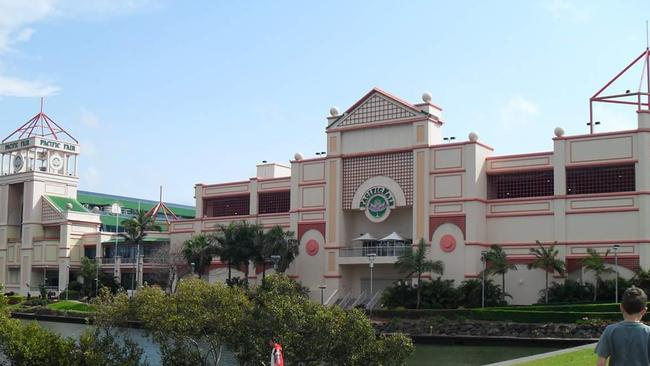
By 1987 more than 13 million people were visiting Pacific Fair each year. Retail sales were in excess of $180m.
With the revamp under way, a further $160m was announced in 1989 to expand the centre by 87,500sq m.
By that year Pacific Fair was turning over $215m annually and AMP said the centre would have a brand-new look for the 1990s, a “pink palace”.
The project was expected to be completed in 1992 and would be marketed as “Australia’s shopping resort’’.
The first stage, known as The Village, opened in 1990. The old teepees and kiosks in the heart of the centre were replaced by new shops.
They included an Everything Australian souvenir shop and a Devonshire tea shop called Danny’s By The Billabong.
By 1992, a pink facade was erected and the new Myer store was open.
It was marketed as having a central atrium and waterfall, a large skylight and glass-backed lifts which allowed locals to look out over the coastal strip.
“With its own bridge across the canal from the highway and a pastel pink facade, the new Myer is higher on bold attraction than just about any other top shop,” a report on opening day said.
“Inside, the place is a gawkers’ paradise and they’ve been arriving in bus loads to drink in the pink-marble ambience.
“The central atrium, zooming up four levels, is lit by special daylight spots that kid you into thinking you’re actually copping a suntan while you shop.”
As the Gold Coast struggled against the early 1990s recession, Pacific Fair proved to be a major exception for employers, with thousands of people taking up new positions in the shops while the nearby Oasis struggled to fill its shops.
It was another five years before tinsel town came to Pacific Fair in the form of one of the world’s biggest celebrities and an out-of-this-world release.
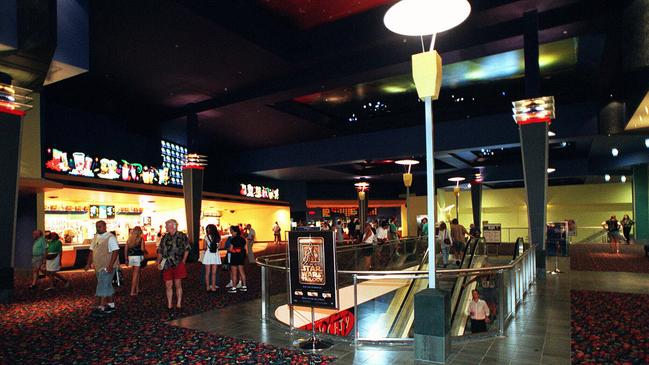
By 1997 McDonnell and East was gone and in its place stood long-time anchor stores Toys R Us and Target. The centre’s state-of-the-art cinema opened in early 1997 and was the Gold Coast’s largest, having 12 theatres and screening the special edition re-release of Star Wars, the same film which topped the box office the year Pacific Fair opened.
More than 3000 people attended the cinema on its opening day.
Three months later, Hollywood superstar George Clooney spent a day at Pacific Fair and opened its Warner Bros shop, attending the premiere of the infamous box office bomb Batman and Robin.
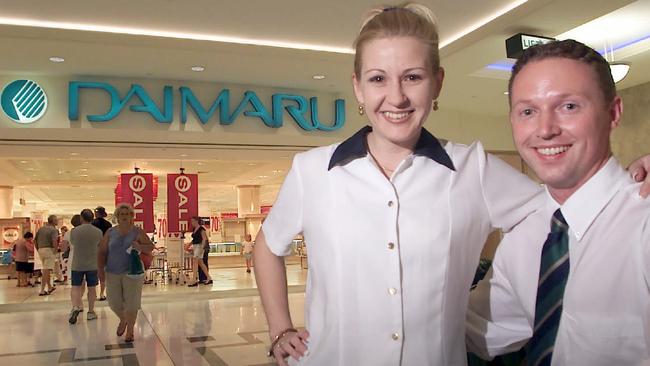
Department store Daimaru arrived in 1998 after a $40m expansion of the centre but, despite signing a lease until 2024, it lasted just four years.
It closed its doors after its Japanese owners exited the Australia market.
By the late 2000s, the pink facade had faded and AMP planned a major revamp which stalled in the face of the global financial crisis. Much of the complex’s lustre was stolen in 2009 when Robina Town Centre was dramatically expanded, securing a range of big-name tenants and an even larger cinema.
As the years passed, it became clear that Pacific Fair needed its own revamp.
Finally, more than $650m was spent between 2014-16 to abandon the pink palace look and redevelop Pacific Fair to become a modern, 21st century centre.
Despite the Covid downturn, the complex remains popular with patrons and tourists today.
Inside story: Secrets of Pacific Fair shopping centre revealed
FROM teepees and pink lotus flowers to a modern shopping centre, Pacific Fair has gone through some dramatic changes in its lifetime.
This week marked its 45th anniversary but the dream that became one of the Gold Coast’s most famous shopping destinations was conceived nearly 60 years ago.
Plans for Pacific Fair were first drawn up in 1963, but planning was put on hold through the late 1960s.
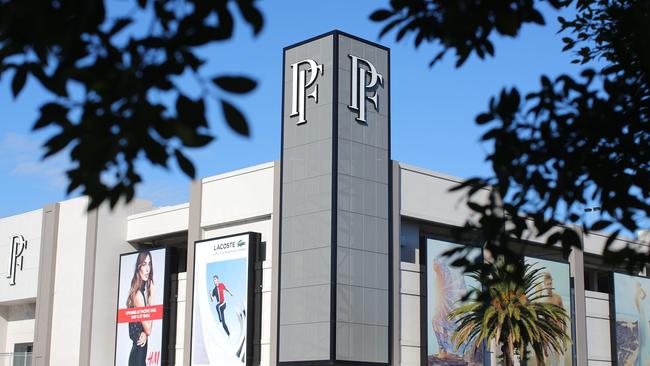
Things kicked into high gear in 1970 after the opening of what was then Queensland’s largest shopping centre, Southport’s Sundale in 1968.
Department store McDonnell and East was the initial anchor tenant at Pacific Fair, followed by Coles and Kmart in December 1975. The latter two continue to operate in the centre today.
Pacific Fair was earmarked for “dreary swamp land” bordering Little Tallebudgera Creek canal near the Broadbeach Lennons Hotel.
Hooker Retail Developments was responsible for building the centre. It was designed by its English-born state manager John C. Barrett and architect “Big” Bill Job.
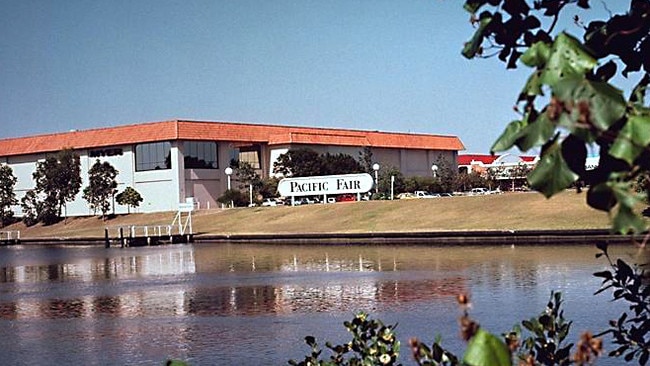
Mr Job spent two months in the US, Canada, Sweden and the UK to inspect cutting-edge shopping centres and admitted the final design was heavily inspired by Disneyland.
Hooker initially planned for the ’70s-era centre to simply be the first stage of a larger development, something that would be realised in coming years.
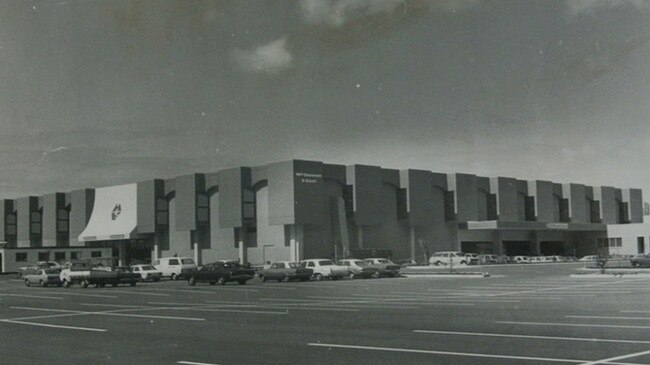
“The imaginative design of the centre, from its chlorinated lakes to its paved walkways immediately sets shoppers at their ease,” Mr Barrett told the Bulletin in 1976.
“We spent about 16 weeks putting special brick paving throughout the centre.
“Not only does it look good but it’s cool on the feet of shoppers who can’t be bothered wearing shoes.
In its initial configuration, the centre was spread over 16.6ha and was expected to attract shoppers and tourists from as far away as Ipswich and Murwillumbah.
It had around 3000 car spaces and was initially managed by Brisbane-born retired World War II Commando Bob Mallon.
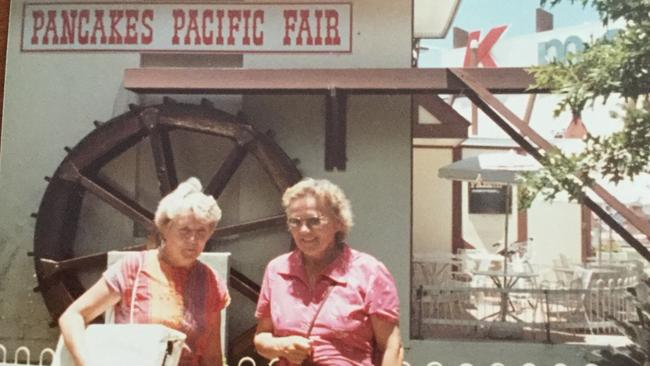
McDonnell and East’s Pacific Fair shop was marketed as “space-age retailing”, becoming the state’s first fully computerised department store and among six in the entire country.
It was described as a “marriage between advanced computer technology and a new retail venture”.
The shopping centre was split into multiple zones hearkening back to different parts of the world.
Among those was Regent Street, filled with mock-Tudor architecture to celebrate “Merry Olde England”. It featured a chemist, bookshop and eateries as well as executive suites.
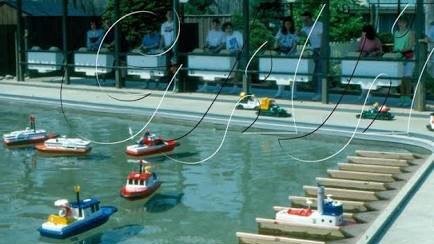
The Concourse was Pacific Fair’s main thoroughfare and still exists, featuring Kmart, which remains in its original location, the Coles New World supermarket. Another attraction was “the Indian Village” and its teepee-inspired shops. The Central Lake included seafood restaurants while the French Quarter was full of “charming shops and quaint kiosks” built around a fountain, and Basin Street was a New Orleans-inspired American zone.
Other ones included Waimanu Place, a Pacific Island-theme zone, the European-inspired Linden Strasse and the Australian Colonial area.
The centre proved to be a huge success and welcomed big crowds in its early years, necessitating an expansion.
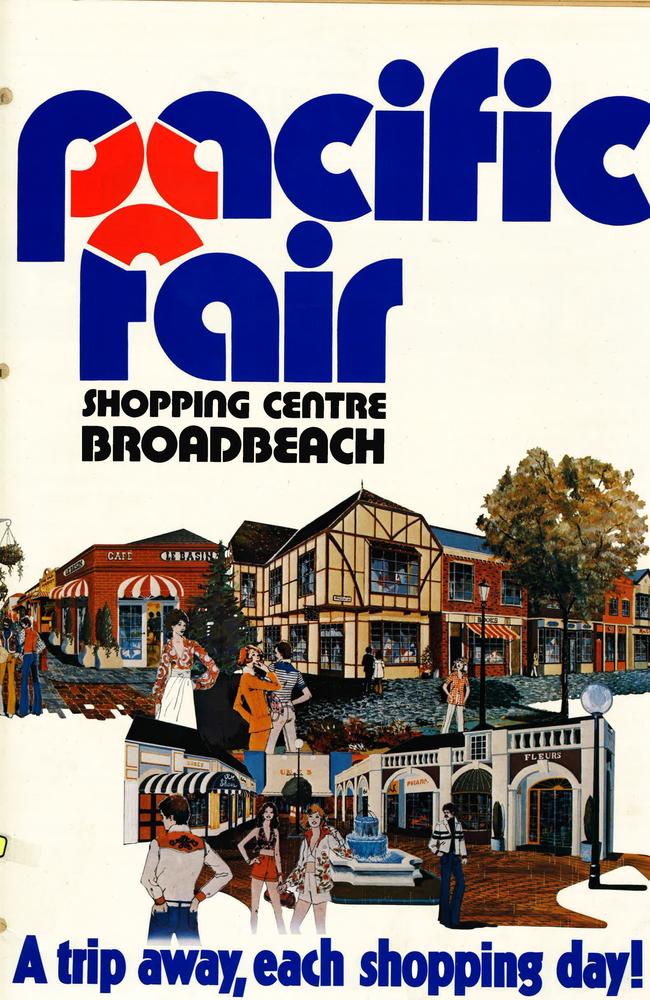
In 1982, the centre expanded to include Myer. An expanding Coles relocated and another 32 specialty stores were added.
By the early 1990s, the retail landscape of the Gold Coast was undergoing a major shake-up.
Sundale, the complex Pacific Fair was built to compete against, closed in the face of increasing competition.
In late 1989 it was put up for sale by its owners, Haematite Pty Ltd and ICIANZ Pension Fund Securities, in the hopes of securing up to $50m. Its final death knell was the opening of Australia Fair in April 1990 as many key Sundale tenants relocated.

Meanwhile, the Harbour Town complex was pitched for Biggera Waters and Robina developer Robin Loh unveiled his own plans for a giant shopping centre complex a short drive from Pacific Fair, setting the stage for a major retail battle for shopping supremacy which continues today.
The early ’90s were a busy time for Pacific Fair. It added a “village”,
California Ave, a four-level Myer, 50 specialty stores, a 700sq m expansion to Coles and a fresh-food marketplace.
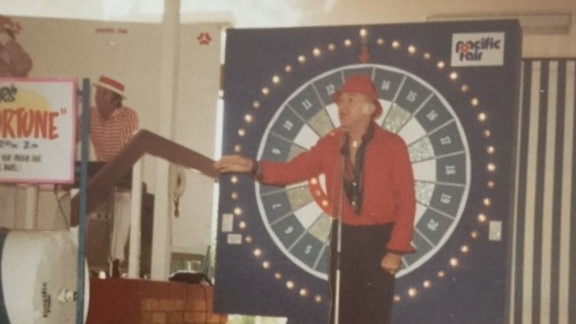
Eventually the old Myer building was converted to a two-level enclosed mall which was opened in October 1992.
Two years later, the McDonnell and East store stopped trading, and Target and Toys R Us took over the area some time later.
NEXT WEEK: RISE AND FALL OF PACIFIC FAIR


